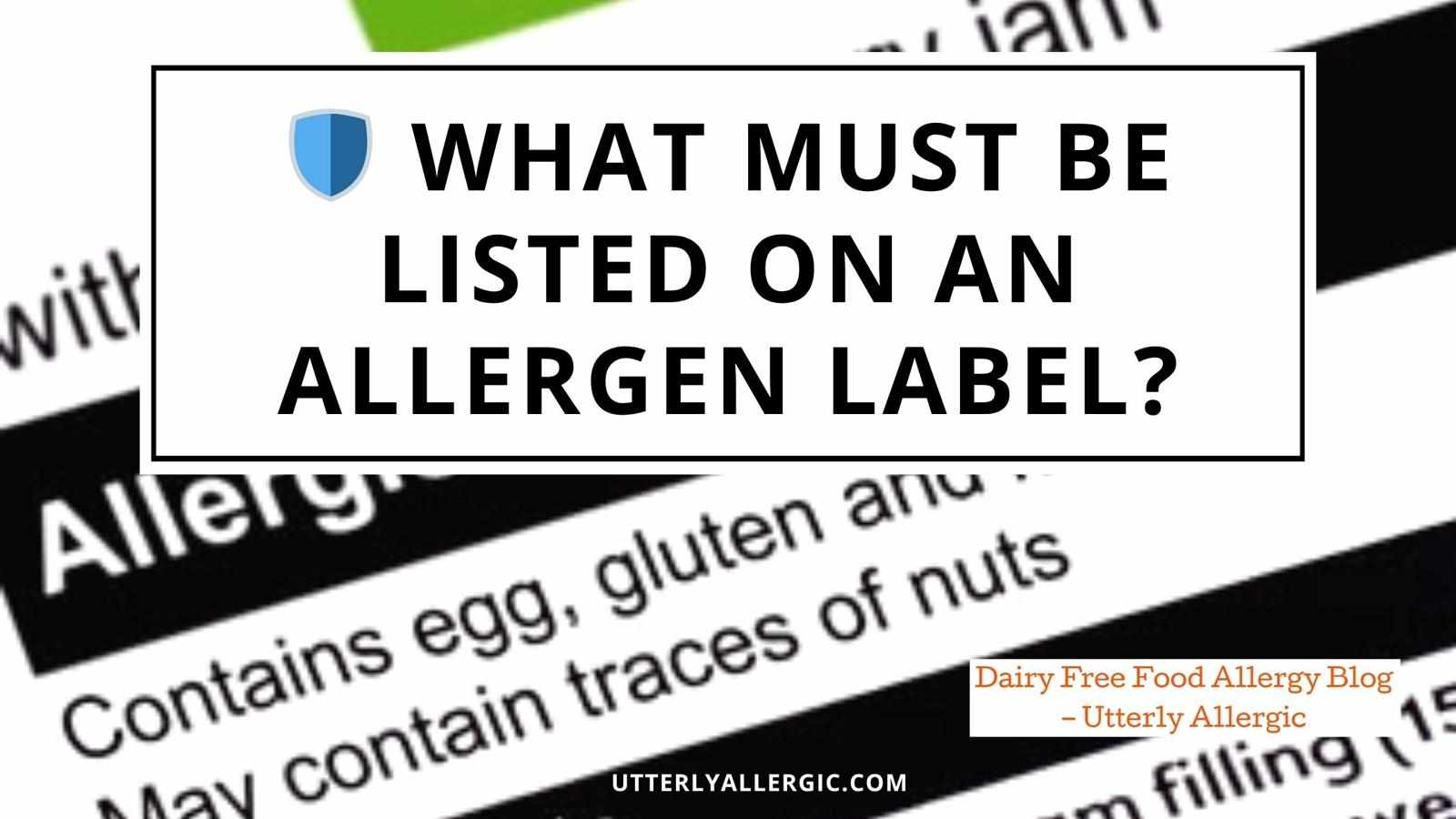
If you or someone in your family has a food allergy, understanding food allergen labeling is essential to staying safe. Allergens can trigger anything from mild reactions to life-threatening anaphylaxis—so manufacturers are legally required to label certain allergens clearly on packaged food.
In this article, we'll break down:
What allergens must be listed by law
The difference between major and minor allergens
What to look for when reading food labels
Common mistakes and hidden dangers
🛑 Why Is Food Allergen Labeling So Important?
Every year, food allergies affect millions of people worldwide. In the EU, it's estimated that over 17 million people suffer from food allergies—many of them children. In the U.S., approximately 1 in 13 children has a food allergy.
Accurate and transparent food allergen labeling helps:
Prevent accidental exposure
Empower consumers to make informed decisions
Hold manufacturers accountable for safety
Support people managing life-long health conditions
That’s why learning the basics of reading food labels is essential for anyone managing an allergy or shopping for someone who is.
✅ What Allergens MUST Be Listed on a Label?
🔟 The 14 Major Allergens (EU Regulation)
In the EU and UK, the following 14 allergens must be clearly identified on food packaging (under Regulation (EU) No 1169/2011):
Cereals containing gluten (e.g., wheat, rye, barley, oats, spelt)
Crustaceans (e.g., prawns, crabs, lobsters)
Eggs
Fish
Peanuts
Soybeans
Milk (including lactose)
Nuts (e.g., almonds, hazelnuts, walnuts, cashews, pecans)
Celery
Mustard
Sesame seeds
Sulphur dioxide and sulphites (at concentrations above 10mg/kg or 10mg/l)
Lupin
Molluscs (e.g., clams, mussels, oysters, squid)
These allergens must be emphasised in the ingredients list, typically using bold, italic, CAPITALS, or underlining.
🇺🇸 U.S. FDA: The Top 9 Major Allergens
In the United States, the Food Allergen Labeling and Consumer Protection Act (FALCPA) requires disclosure of the following 9 allergens:
Milk
Eggs
Fish
Crustacean shellfish
Tree nuts
Peanuts
Wheat
Soybeans
Sesame (added as of January 1, 2023)
Unlike in the EU, sulphites, mustard, and lupin are not required allergen declarations in the U.S.
🆚 Major vs. Minor Allergens: What’s the Difference?
Major allergens are those that account for the vast majority of allergic reactions. These are the ones legally required on packaging.
Minor allergens are less common, but can still be serious. They may include:
Corn
Legumes (other than soy and peanuts)
Seeds (like poppy or sunflower)
Certain spices (e.g., cinnamon or garlic)
While manufacturers aren't required to label these by law, individuals with specific sensitivities should always contact brands or choose foods with limited ingredients.
🧐 How to Read Food Labels for Allergens
When reading food labels, here are the key areas to check:
1. Ingredients List
Allergens must be listed in the ingredients list. If an allergen is part of a compound ingredient (e.g., "whey powder" from milk), it must be declared.
Example:
Ingredients: Sugar, Wheat flour (gluten), Vegetable oil, Skimmed milk powder
2. Allergen Statement (Optional)
Some products include a separate line like:
Contains: Milk, Wheat, Soy
While helpful, this is not mandatory in the EU. Always check the full list of ingredients even if the allergen statement seems clear.
3. Precautionary Allergen Labeling (“May Contain”)
This includes phrases like:
"May contain traces of nuts"
"Produced in a facility that also processes egg"
This is voluntary but widely used when cross-contamination is possible. It’s especially important for people with severe allergies.
🍪 Common Hidden Sources of Allergens
Some allergens can appear in unexpected places. Here's what to watch out for:
AllergenHidden SourcesMilkProcessed meats, crisps, chocolateEggsPasta, dressings, wine clarifiersSoySauces, breads, meat substitutesWheatSoups, sauces, beerNutsPesto, cereal bars, dessertsSesameCrackers, hummus, baked goods
Always take time when reading food labels—especially for processed or imported foods.
🚫 Allergen-Free Claims: Are They Safe?
If a label says “Dairy-free” or “Gluten-free,” it doesn't always mean the product is safe for people with allergies.
Gluten-free = contains less than 20ppm gluten, not necessarily wheat-free
Dairy-free may still contain milk proteins in trace amounts
“Nut-free facility” claims vary between countries—check certifications
When in doubt, contact the manufacturer directly for clarification.
🧠 People Also Ask
❓Do all allergens have to be listed on food labels?
Only the major allergens (as defined by law) must be listed. In the EU, that’s 14 allergens; in the U.S., it’s 9. Minor or uncommon allergens do not legally have to be included.
❓What is precautionary allergen labeling?
Precautionary labeling warns of potential cross-contamination. It’s not legally required but often included to help protect people with severe allergies.
❓Can allergens be in non-food products?
Yes. Allergens can appear in medications, supplements, cosmetics, and even cleaning products. Always read labels carefully.
❓How can I tell if a product is safe for someone with multiple allergies?
Look for allergen-specific certifications, contact the manufacturer, and always prioritise products with simple, transparent ingredient lists.
🧾 Final Tips for Staying Safe
Read every label—even on familiar products—as ingredients can change.
Be cautious with imported goods, which may follow different allergen labeling laws.
Educate children, schools, and caregivers on allergen safety.
When dining out, always ask about food prep and cross-contact.
✅ Conclusion: Knowledge is Power
Knowing what must be listed on an allergen label can be life-saving. While major allergens are clearly regulated, it’s up to consumers to read thoroughly, ask questions, and make informed choices. By mastering food allergen labeling and staying diligent when reading food labels, you protect yourself and others from unnecessary risk—every meal, every time.
Hi, I’m Kristi—mom of three beautiful kids, wife, and former teacher turned full-time allergy advocate. Our family's journey with food allergies, especially Brayden’s severe dairy allergy, has been filled with challenges, learning, and growth. I created Utterly Us
to share our experiences, provide helpful insights, and support other families navigating similar paths. Welcome to our story!


Write a comment ...